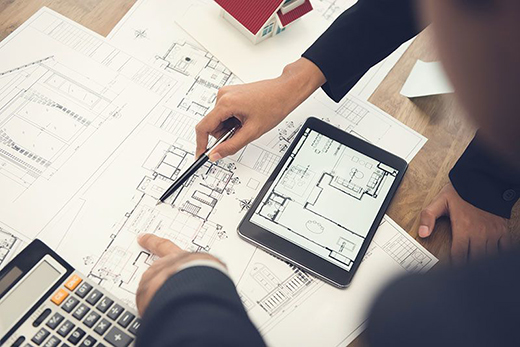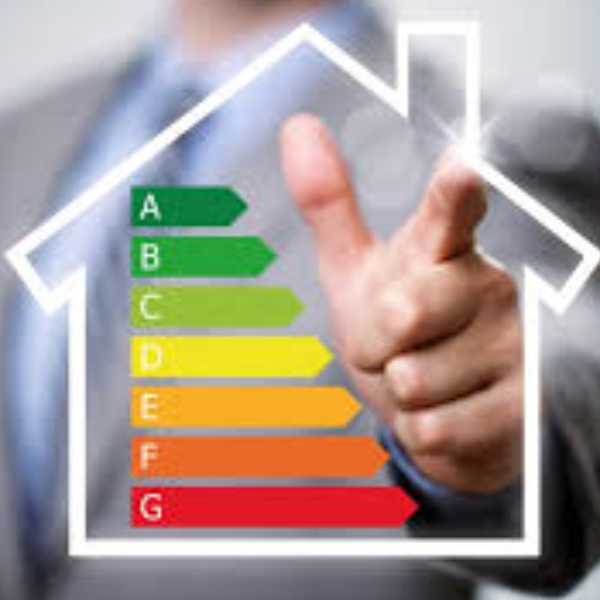Retrofitting

Retrofitting Properties Nationwide Service
- Flexible hours; Book a time that suits you
- Same Day & Next Day Bookings
- High Quality Retrofitting Services
- Free Cancellation Policies
- Pay us by Card, PayPal, Google Pay, Apple Pay or Pay on-site
How many bedrooms do you have?

Recently booked jobs


Retrofitting: What Is The Process, And How Does It Benefit Your Home?
Retrofitting is adding new features or technology to an existing structure. In the context of home improvement, retrofitting refers to installing modern amenities into an older home. While many homeowners may shy away from retrofitting due to the cost, there are several benefits.
Not only can it increase the value of your home, but it can also make it more energy-efficient and comfortable to live in. If you're thinking about retrofitting your home, read on to learn more about the process and how it can benefit you.
What Is Retrofitting?
Retrofitting is adding new features or functionality to an existing product. In many cases, retrofitting is done to improve the performance of a product or to make it compatible with the latest technology.
For example, a company might retrofit its products with new features to make them more energy efficient. Or, a manufacturer might add wireless connectivity to its products so they can be remotely controlled. Retrofitting can be a cost-effective way to upgrade products without completely replacing them.
It can also help companies keep up with changing technologies and market demands. In some cases, retrofitting may be the only option available when certain parts or components are no longer manufactured.
Why Is It Important For My Property?
It is important to retrofit your property for several reasons.
- First, it can help improve your home or office's energy efficiency, saving you money on your utility bills.
- Second, improving indoor air quality and temperature control can make your property more comfortable to live or work in.
- Third, it can help protect your property from damage in a natural disaster or severe weather.
- Finally, retrofitting can increase the resale value of your property, making it a wise investment for the future.
How Much Does Retrofitting My Home Cost?
When it comes to retrofitting your home, the cost can vary greatly depending on several factors. For example, the size of your home, the retrofitting required, and the materials used can all affect the overall cost. Generally speaking, retrofitting is a costly project.
However, it is often worth the investment, as it can improve your home's energy efficiency and help you save money on your energy bills in the long run. There are a few different ways to finance retrofitting projects. You can use government grants or rebates to offset some of the costs.
Alternatively, you could take out a loan to cover the expenses. Whatever route you choose, research and get multiple quotes before making any decisions.
Ways To Increase Your Home's Energy Efficiency
There are a number of ways to increase your home's energy efficiency, and retrofitting is one of the most effective. By making some simple changes to your home, you can save money on your energy bills and make your home more comfortable.
Adding insulation is one of the easiest ways to improve your home's energy efficiency. This will help keep your home warmer in the winter and cooler in the summer and reduce noise pollution. You can also install weatherstripping around doors and windows to prevent drafts and seal any gaps or cracks in your walls or ceilings.
Another great way to improve your home's energy efficiency is to upgrade your windows. Older windows tend to be very drafty, so replacing them with newer, more efficient models can make a big difference. If you're not ready to replace your windows at once, you can also consider adding storm windows or installing window film.
Finally, one of the best ways to increase your home's energy efficiency is to switch to energy-efficient lighting. Compact fluorescent bulbs use less electricity than traditional incandescent bulbs, so they'll save you money on your energy bill. And if you have trouble remembering to turn off the lights when you leave a room, invest in smart lightbulbs that can be controlled remotely or with a timer.
Types Of Houses That Can Be Retrofitted
There are many types of houses that can be retrofitted. The most common type of retrofitting is upgrading your home's insulation. This can be done by adding new insulation to the walls, floors, and ceilings or upgrading the current insulation.
Another retrofitting is to add or upgrade windows and doors. This can help improve your home's energy efficiency and keep out drafts.
Finally, another retrofitting is installing solar panels on your roof. Solar panels can help to generate electricity for your home and reduce your dependence on the grid.
Reasons Why Your Home Needs Retrofitting
There are many reasons why you should consider retrofitting your home. As mentioned above, retrofitting is upgrading your home's existing structure and systems to improve its performance, comfort, and safety.
Here are some of the top reasons why retrofitting your home is a smart investment:
- To improve energy efficiency: Retrofitting can help make your home more energy efficient by improving insulation, sealing air leaks, and upgrading to more efficient heating and cooling systems. These upgrades can help reduce energy bills and make your home more comfortable year-round.
- To prepare for extreme weather: Extreme weather events are becoming more common due to climate change. Retrofitting can help strengthen your home against high winds and heavy rains or snow if you live in an area susceptible to hurricanes, tornadoes, or severe winter weather.
- To protect against wildfires: Wildfires are a growing threat in many parts of the country. If you live in an area at risk for wildfires, retrofitting can help create a barrier between your home and the fire by installing ember-resistant siding and roofing materials.
- To reduce noise pollution: If you live in a busy city or near an airport, retrofitting can help soundproof your home to reduce noise pollution from outside sources. This can improve your quality of life by making your home a quieter and more relaxing place.
- To increase the value of your home: Retrofitting your home can also increase its resale value. Buyers are increasingly interested in energy-efficient and sustainable homes, so retrofitting your home can make it more attractive to potential buyers.
Tips To Improve Your Home With Retrofitting
- Evaluate your home's energy needs and select the right products for your retrofit project.
- Work with a qualified contractor who has experience with energy-efficient retrofits.
- Be sure to seal and insulate your home after the complete retrofit properly.
- Monitor your energy use after the retrofit to ensure that you're getting the expected savings.
Process Of Retrofitting A House
Many people think of renovation and remodelling when it comes to home improvement. However, another option that can be just as effective is retrofitting. Retrofitting is making changes and/or additions to an existing structure to make it more energy-efficient and/or sustainable.
There are many benefits to retrofitting a house, including reduced energy bills, improved comfort, increased property value, and reduced environmental impact. And while retrofitting can be a big project, it can be broken down into smaller steps, making the process less daunting.
The first step in retrofitting a house is to assess the current state of the home. This includes looking at the insulation, windows, heating and cooling systems, and water heater. Once you know where your home stands in terms of energy efficiency, you can start making changes.
Adding insulation to the attic or walls is one of the most common retrofits. This helps to keep heat in during the winter and cool air in during the summer, leading to lower energy bills year-round. Another popular retrofit is installing energy-efficient windows. These windows can help reduce heat loss in the winter and keep cool air in during the summer.
Other retrofits that can be made to a house include upgrading heating and cooling systems, installing solar panels, and installing low-flow plumbing fixtures. These changes can lead to even greater savings on energy bills and further comfort throughout the home.
Things To Consider When Retrofitting
There are many things to consider when considering a retrofit for your home. The first is the type of retrofit you wish to do. There are many different types of retrofits, each with its benefits and drawbacks. You must decide which retrofit is right for you and your home.
The second thing to consider is the cost of the retrofit. Some types of retrofits can be quite expensive, so you must ensure that you can afford the project before you begin. If you are not sure whether or not you can afford a particular retrofit, it is always a good idea to speak with a professional contractor or energy auditor who can help you estimate the costs.
Finally, you will need to consider the time frame you would like to complete the retrofit. Some projects can be completed relatively quickly, while others may take several months or even years. Make sure you have a realistic timeline before starting any work so you do not get discouraged.
Home Retrofitting
Home retrofitting is making changes and improvements to an existing home to make it more energy efficient and sustainable. This can include insulation and air sealing to solar panels and water conservation measures.
Making your home more energy efficient has several benefits.
- It can save you money on energy bills, help reduce your carbon footprint and make your home more comfortable.
- Retrofitting is a big investment, but there are often rebates and incentives available to help offset the cost.
- Careful planning can be a cost-effective way to make your home more comfortable and livable for years to come.
Retrofitting Homes UK
Retrofitting a home involves changes and improvements to the existing structure to make it more energy efficient. This can include installing insulation, draught-proofing, double glazing and solar panels. Retrofitting is becoming increasingly popular in the UK as people look for ways to save money on their energy bills.
It is also seen as a way of helping to reduce our carbon emissions and tackle climate change. Several government schemes are available to help homeowners with the cost of retrofitting their homes. These include the Green Deal and the Energy Company Obligation (ECO). If you are considering retrofitting your home, it is important to get advice from a professional to ensure that the changes you want make are appropriate for your property and will save you money in the long run.



